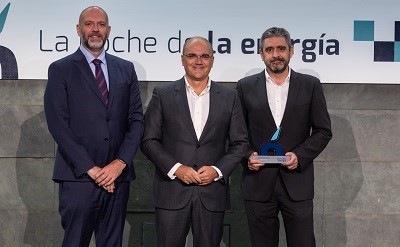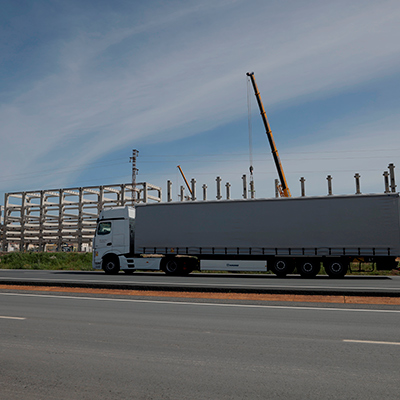- El Periódico de la Energía recognizes the Andalusian Green Hydrogen Valley as the best project among those announced in Spain and a key initiative to accelerate energy transition and independence
- With a 3-billion-euro investment, Cepsa is spearheading a project with 2GW of capacity in two plants to be established in Palos de la Frontera (Huelva) and San Roque (Cádiz)
- The company is building a partner ecosystem with leading companies all along the value chain of this new energy vector. Cepsa has already secured the sale of more than 60% of its green hydrogen production until 2030
- In addition to decarbonizing adjacent industry and attracting new ones, Cepsa has signed several agreements to create the first green hydrogen corridor between Northern and Southern Europe, connecting the ports of Algeciras and Rotterdam
The company received this recognition today at the second edition of “Energy Night” (“La Noche de la Energía”), a benchmark event in which El Periódico de la Energía rewards the best initiatives and outstanding work of companies, public administrations and personalities in Spain's energy sector.
Carlos Barrasa, Director of Commercial & Clean Energies at Cepsa, expressed his satisfaction after receiving this award: “We have made significant progress in developing the Andalusian Green Hydrogen Valley: we have various agreements all along the value chain, and we have already committed the sale of more than 60% of our green hydrogen production by 2030. All this demonstrates our project's strength and competitiveness. This recognition excites and motivates us to remain committed to this new energy vector as one of the cornerstones of the energy transition.”
Cepsa-produced green hydrogen will facilitate decarbonization of the company's activity while helping to decarbonize industry and heavy ground, air and maritime transport, through its direct use or derivatives such as green ammonia and methanol.
With an investment of 3 billion euros, the company is moving forward on the development of this project, which will have two plants with 1GW of capacity each, located in Palos de la Frontera (Huelva) and San Roque (Cadiz). The Huelva plant, to be located on Cepsa land near the La Rábida Energy Park in Palos de la Frontera, will start up in 2026, reaching full capacity in 2028. The Campo de Gibraltar plant will be installed in the San Roque Energy Park and will be operational in 2027.
In addition, also within the Andalusian Green Hydrogen Valley framework, Cepsa will build in San Roque the largest green ammonia plant in Europe with a production capacity of up to 750,000 tons per year. With an investment of 1 billion euros, this plant will be operational in 2027.
Cepsa is establishing strategic collaborations with leading companies all along the hydrogen value chain, such as Fertiberia, EDP, Enagás Renovable and Alter Enersun, to promote the sustainability of the industry, attract new ones and foster the full development of Andalusia’s hydrogen industry.
Furthermore, development of this valley will position Andalusian ports as world leaders in supplying new green fuels for maritime transportation. Additionally, Cepsa's agreement with the Port of Rotterdam has taken the initiative to an international level, as it will allow the first green hydrogen corridor between Northern and Southern Europe to be developed, connecting the ports of Rotterdam and Algeciras. To implement this corridor, Cepsa has also partnered with European companies, such as Yara Clean Ammonia, Gasunie, ACE Terminal and GETEC, to bring green hydrogen and ammonia to customers in the north of the continent.
The jury for these awards also valued the fact that this project, while contributing to the 2030 Agenda in the fight against climate change, will position Andalusia and Spain as a European energy powerhouse, capable of exporting energy for the first time in history. This will strengthen the continent's security of supply and energy independence, thus supporting the REPowerEU strategy.
Boosting industrial activity and employment in the region
The development of the Andalusian Green Hydrogen Valley will generate around 10,000 jobs, including around 1,000 direct jobs, while stimulating economic activity in more than 400 local small and medium-sized enterprises. It will also boost industrial activity in the region by facilitating access to affordable, secure and sustainable energy that will be available near production centers. At present, Andalusia consumes about 40% of the hydrogen used in Spain.
The region already has important industrial centers, and Cepsa's aim is to establish partnerships and collaborations to boost their competitiveness. In this context, the Andalusian Green Hydrogen Valley aims to become a connection point with other stakeholders along the hydrogen value chain, such as electrolyzer manufacturing, green fertilizer production and hydrogen transport technology.




